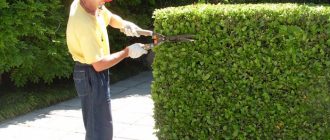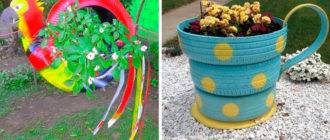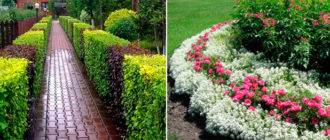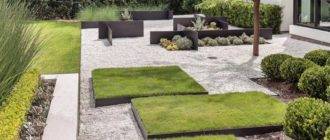A garden that does not require constant maintenance is the dream of any summer resident. To bring it to life, it is necessary to plant unpretentious cultures. When choosing them, be sure to take into account the peculiarities of the soil cover and the climate. The result will not disappoint you if plants are selected that need the same conditions.
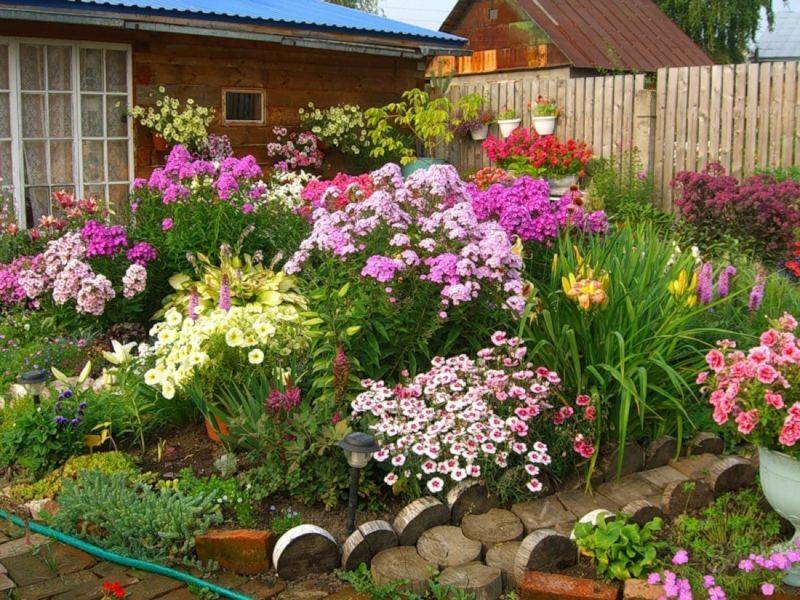
Also, one should not forget about such a factor as the appearance of the composition. There are several rules to follow when setting up a garden:
- Regardless of which crops are chosen, the process of creating a flower bed begins with preparing the soil. The complex of measures necessarily includes digging, feeding and loosening the soil.
- Before planting, you need to carefully consider the composition.
- The period and period of flowering of plants planted in the front garden may vary. Thanks to this, it will retain its decorative effect for the entire warm season.
- When planting, you need to pay attention to the photophilousness and shade tolerance of flowers. Often the intensity of its color depends on the location of the plant.
Blooming unpretentious perennials
To create an original landscape design, unpretentious perennials are often combined with decorative paths, figurines and fountains.
Plants can be planted in various garden devices, which include modular and alpine flower beds, borders, mixborders, rabatki, parterres and rockeries.
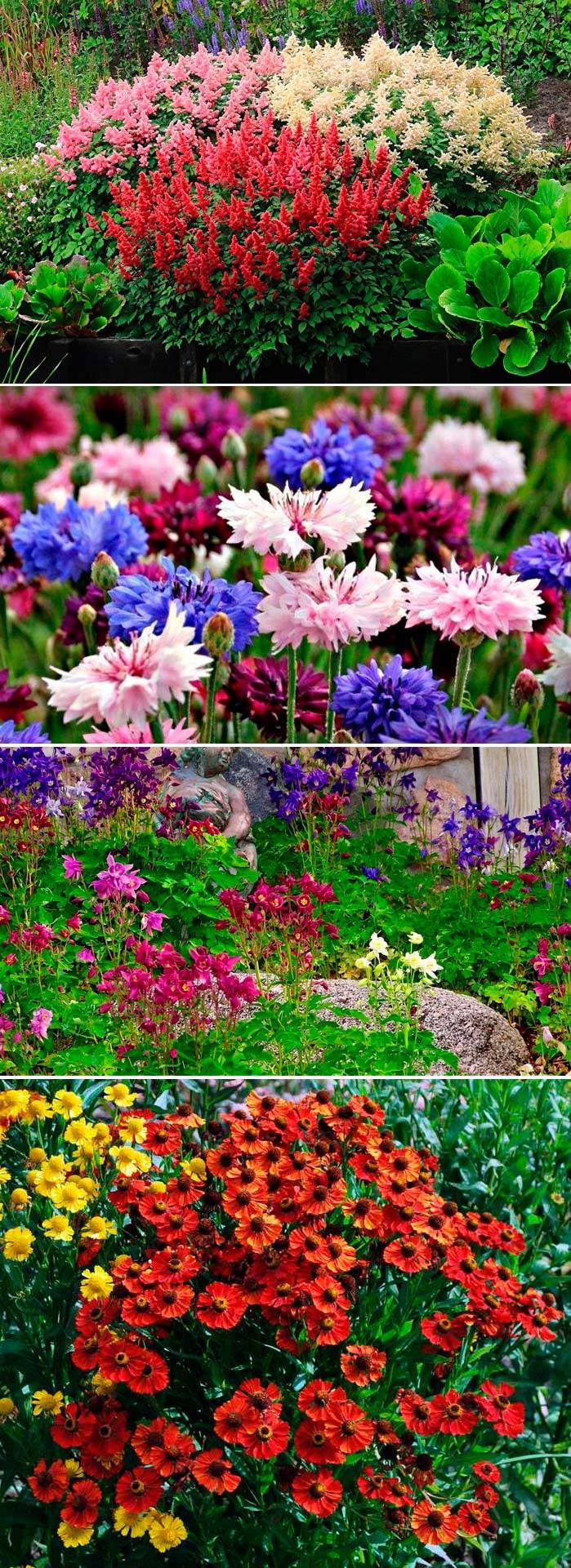
Landings can be solitary and group, the latter are subdivided into homogeneous and mixed.
Astilba
Perennial, the height of which does not exceed 1.5 m. Astilba can be planted both in a monoclumba and in the center of a well-thought-out composition. The main feature is long flowering, which begins in July and ends with the onset of the first frost.
Cornflowers
They are often used to create backgrounds. Difficulties with disembarkation usually do not arise. This is due to the undemanding nature of the soil. Experienced summer residents prefer to plant plants that give corollas of various shades.
Water collector
Flowers appear in the second year after planting. They decorate the site throughout the warm season. In the fall, green foliage turns purple or red.
Gelenium
This herbaceous plant produces bright orange corollas during flowering. They outwardly resemble multi-colored daisies. To achieve a decorative effect, it is necessary to provide watering in dry weather.
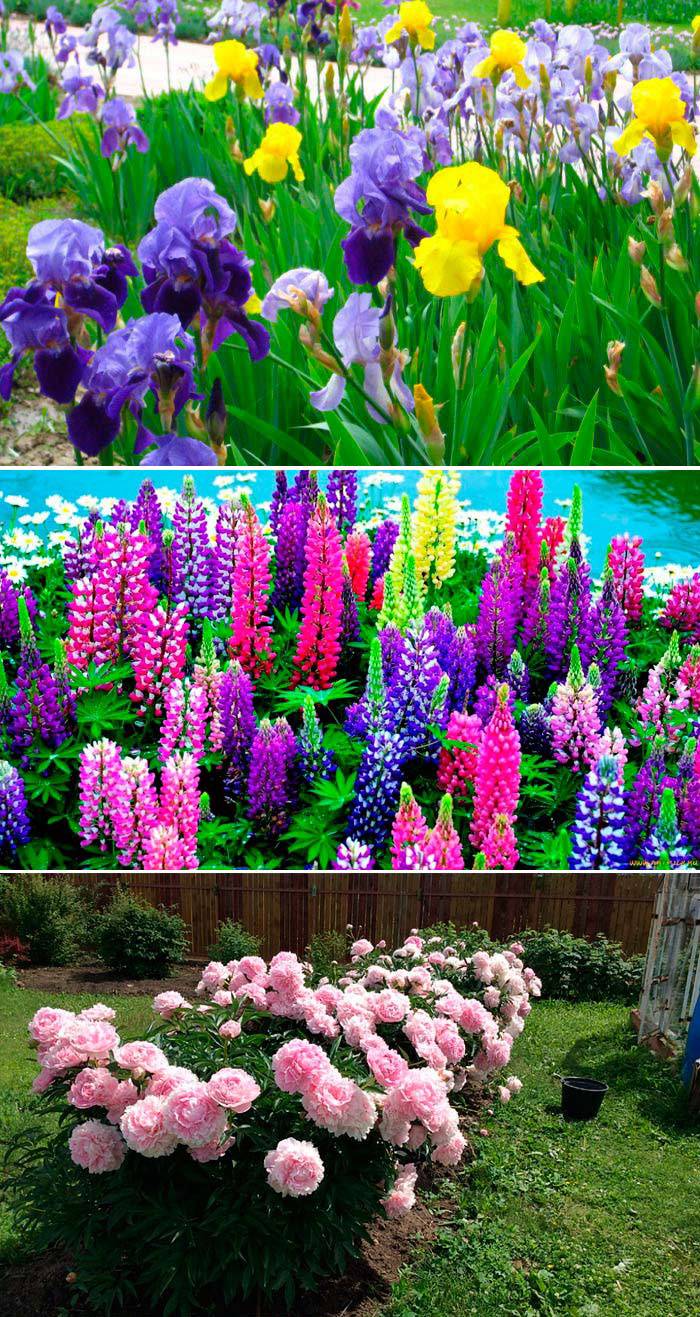
Iris
This plant is distinguished by its beauty and grace. Flowers are used for framing reservoirs, creating monoclumbus, composing mixed plantings. Irises are propagated by dividing the rhizomes. When planting them, you should take into account the needs. For example, some varieties prefer open sunny areas, others prefer partial shade.
Lupine
Many people call lupine a perennial weed. This plant is more adapted to life in adverse conditions than other horticultural crops. Its seeds can even make their way between natural stone tiles, which are often used to make a path. The list of distinctive features of lupine includes a wide range of shades, carved leaf blades, tallness. The culture is propagated using seeds.
Read the article about how to arrange a flower garden in white.
Herbaceous peony
The plant begins to bloom the next year after planting. The peony needs organic fertilizers, abundant watering and good drainage. To ensure the latter, sand should be added to the soil. Unfortunately, the flower only blooms for a short period of time.
Chamomile garden
A flower that can decorate any flower bed. Chamomile has a long flowering period. The culture is propagated by seedlings, dividing the root system and seeds.In the first case, sowing is carried out in February, planting in the soil is left for August. It is possible to transplant it throughout the season; it is better to choose not a hot, rainy day.
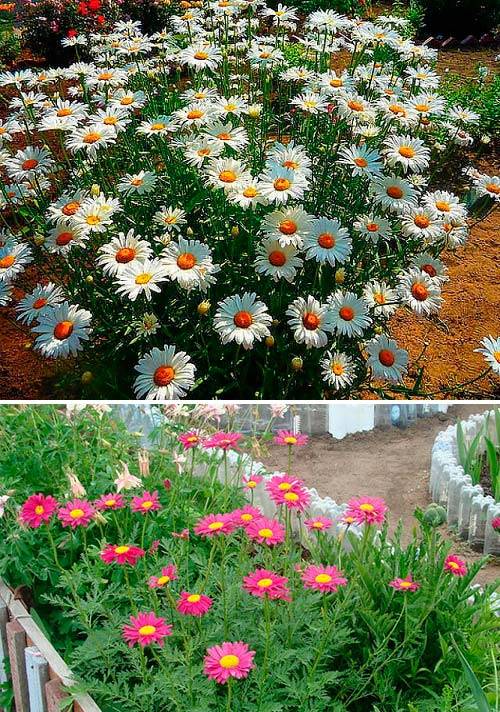
The usual white chamomile is called the daisy, the colored varieties are referred to the group of pyrethrum. Among their characteristic features are bright colors and smaller size.
Phlox
Unpretentious perennials of different colors. Phloxes are distinguished into a special category, which change their shade from raspberry to lilac. They can grow in partial shade and in the sun. The buds are bright and large in size for 8 seasons. Subsequently, the flowers become smaller, the intensity of their color decreases markedly. Over time, phlox can crowd out other plants. If you want to achieve maximum decorative effect, the bushes should be watered abundantly and fed regularly with organic fertilizers.
Decorative deciduous unpretentious perennials
With the help of horticultural crops from this category, you can divide the site into functional zones, create a background for perennial flowers, equip borders and other decorative elements.
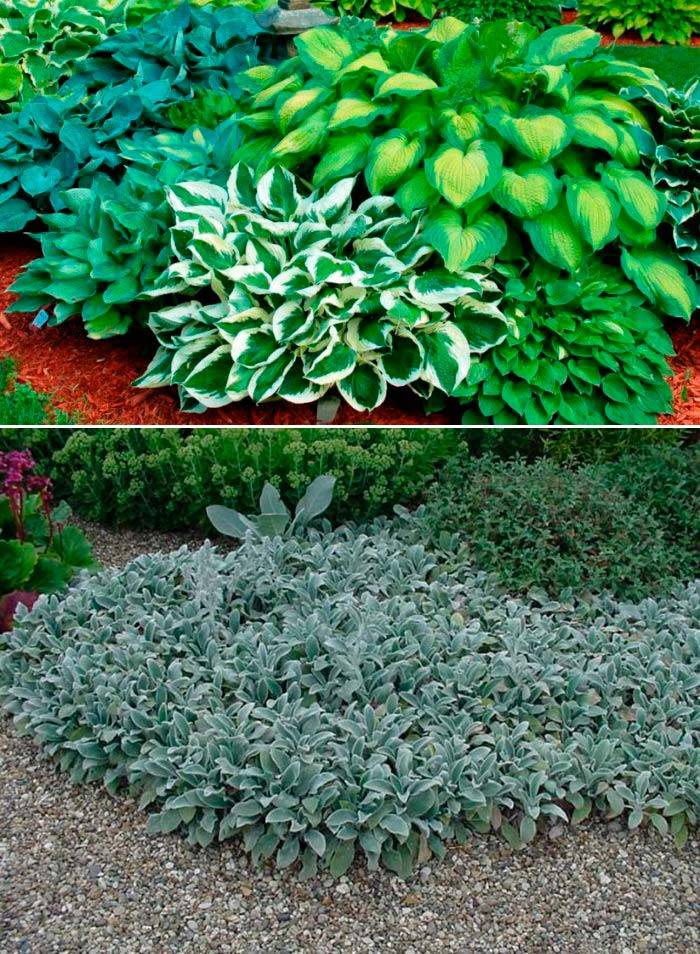
Hosta
This herb is often referred to as funkya. Leaf blades are formed on the petioles and in the root rosette. They can vary in color, size and texture. There are variegated forms in an extensive assortment. Among the characteristic features are high peduncles, racemose inflorescences. The fruit is a leathery capsule with winged black seeds inside.
Byzantine chastetz
A groundcover whose leaves are adorned with silvery felt. Corollas, the appearance of which resembles a spikelet, are formed on tall peduncles. The purist is ranked among creeping crops. Its long rhizome grows up to 1 m. The leaves become the main value of the garden culture. They can be stem and root. Their length is no more than 12 cm. Branched shoots are distinguished by their density. The Byzantine Chistess is often used to decorate alpine hills and rockeries, they are framed with borders and garden paths.
Maintenance-free groundcover
Shrubs, vines and herbaceous crops from this group have decorative properties. They are planted in order to decorate the backyard, prevent the growth of weeds and dry out the soil. There is no need for special care. Natural carpet is formed as a result of the growth of the root system in width.
Sedum
Plants that are drought tolerant and fast growing. They are often planted as live mulch. The growth of sedum occurs in different ways. The appearance is determined by the varietal characteristics. During flowering, bright corollas attract bees.
Saxifrage
The genus includes 440 varieties. Saxifrage is especially decorative during the flowering period. The culture is propagated by means of seeds and vegetative parts. The latter include the rhizome, daughter rosettes. This method is considered to be simpler and more efficient. Plants are grown in rocky areas, retaining walls and rockeries.
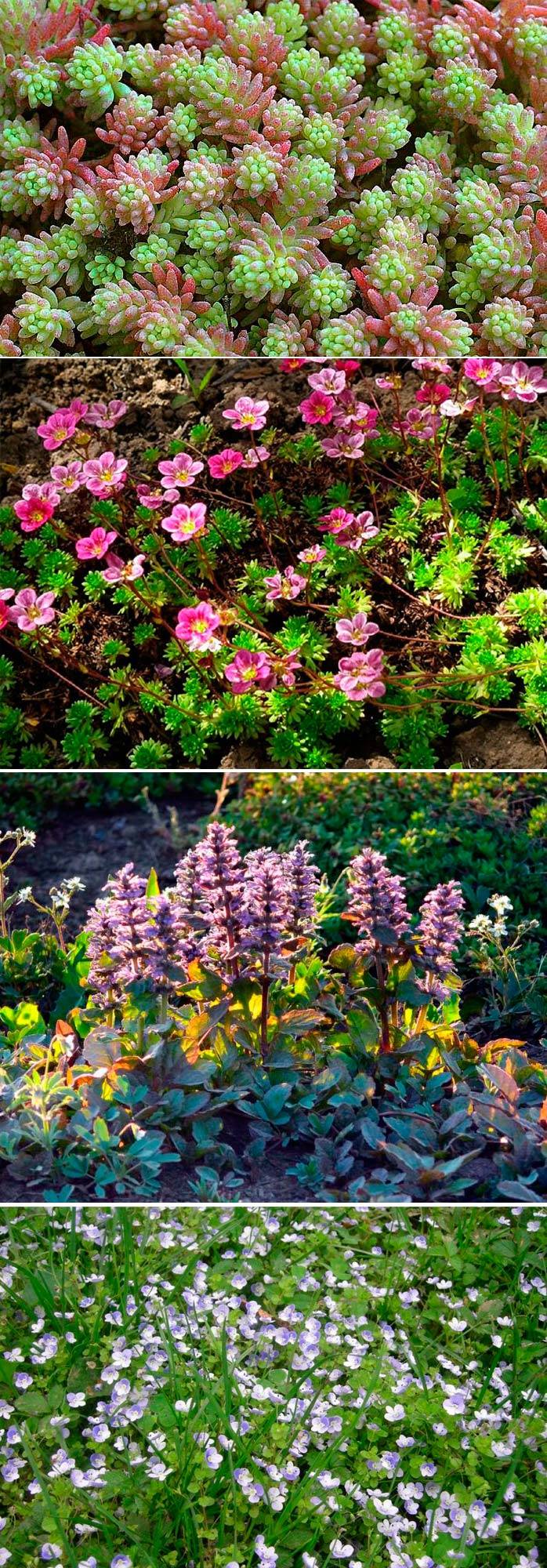
Tenacious creeping
Differs in bright unusual foliage. The tenacious creeping can be seen in perennial borders and under bushes. During flowering, bright blue spikelets open on the shoot.
Veronica threadlike
It is used to create dense, beautiful carpets. In early summer, they are covered with small blue-white corollas. Having planted threadlike Veronica in the backyard, you can forget about weeding. The culture effectively suppresses weeds.
You can even decorate a front garden if you are an inexperienced gardener.

